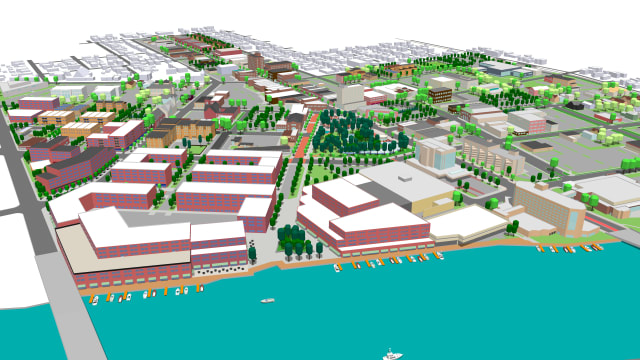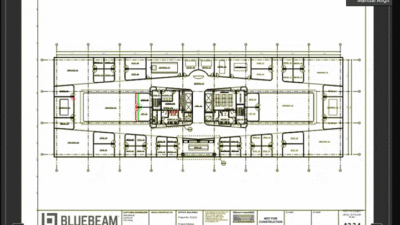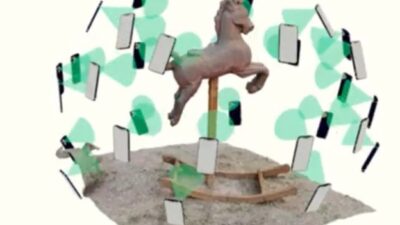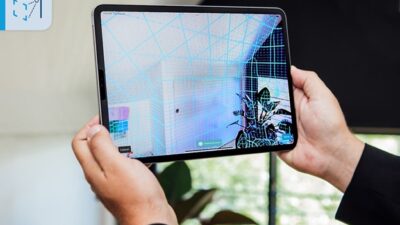With USD, SketchUp models can make surprisingly detailed and lifelike models of whole communities

Oshkosh, Wis., the city made famous by OshKosh B’gosh bib overalls for children, is now getting attention for another type of software — 3D visualization in the digital realm. The little city of 67,000 on Lake Winnebago has been 3D modeled in great detail.
The buildings were created using the popular 3D modeling program SketchUp, but a recently introduced a universal scene description (USD) graphic file software connector is what enabled detailed views of all the buildings, trees, infrastructure, vehicles and watercraft.
Trimble, the company that owns SketchUp, is a member of the Alliance for OpenUSD (AOUSD), whose founding members include visualization heavyweights Pixar, Adobe, Apple, Autodesk and Nvidia. AOUSD aims to make the USD file format (created by Pixar) a universal standard. Nvidia has fully embraced the USD format, making it the foundation for Nvidia Omniverse, a platform of APIs, SDKs and services to let developers easily integrate USD and RTX rendering technologies into existing software tools as well as modeling and simulation workflows.
USD was initially conceived to render the backgrounds in video games and 3D animated movies — including millions of models that populate imaginary worlds and cities with fictional characters. Cutting-edge AEC design firms such as Chicago-based community and urban design consultancy Houseal Lavigne Associates were quick to seize on USD to portray real-world locations having millions of objects. The USD format lends itself to efficient viewing of large datasets. A USDZ derivative (with Z standing for zip) allows AR and VR viewing of these locations.

The Oshkosh city model was created by a team led by Houseal Lavigne principal and cofounder Devin Lavigne. The Chicago-based firm provides 3D visualization services to city planners and architectural firms aiming to show proposed projects in 3D AR/VR with high visual fidelity. Such immersive experiences serve to convey spaces, explain visions, and dazzle decision makers. That’s in contrast with communicating via 1/36 scale models or 2D renderings and stylized artwork that can be somewhat less impressive.
Lavigne starts with early conceptual 3D models made with SketchUp and then (using Omniverse) adds layer upon layer of eye candy — a brick-like texture on one layer, foliage on another, leaves on a tree lollipop, vehicles on the roads — until the scene comes to life. One can still tell it’s computer rendering, not a photograph, but the difference between the original SketchUp models and the result is night and day.
This would’ve been practically impossible with the old USD converter, Lavigne explains, because the USDZ exporter understands model components.
More specifically, every tree, car, building, window, and so on is a component. Once created, a given model can reuse these components as a way to keep file size down. One window component might be copied and reused thousands of times on a given building and even throughout a city. Changes on one instance of a window design propagate to all other instances. Likewise, thousands of instances of a tree can be concurrently changed to autumn colors or swapped with another species … it’s a cinch.
A previous USD connector didn’t take advantage of components. With the new connector, users can bring whole city models into Omniverse. Will this capability be easy enough for architects to use? Lavigne thinks so. The program is a lot like Adobe Photoshop, which architects use all the time.
The Oshkosh model details the city to LOD two and a half according to Nikolas Davis, who helped with the modeling, and the environs in lesser detail. The urban model is meant to be used for city planners who are looking at plans for downtown development, such as how a planned building might block views or enhance the skyline. (Yes, Oshkosh has one.) The model is not accurate in the GIS sense as it’s not geolocated and doesn’t account for terrain or the curvature of the Earth. “Oshkosh is on a 2° slope,” says Davis. “We did not model that.”
Still, the use of Nvidia Omniverse and the new USDZ converter expands the world of SketchUp users.



